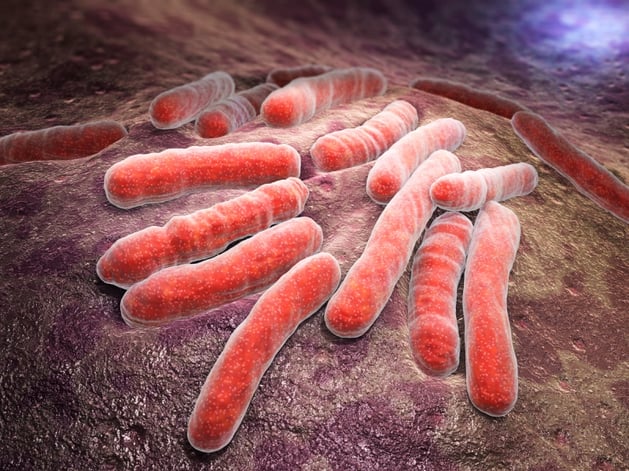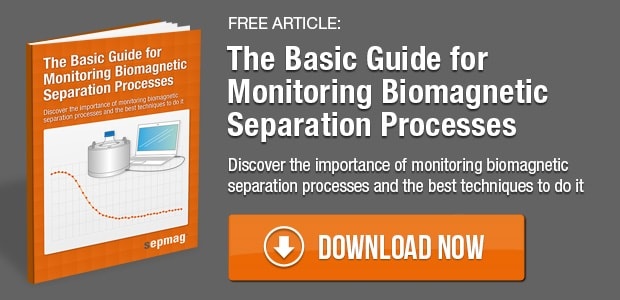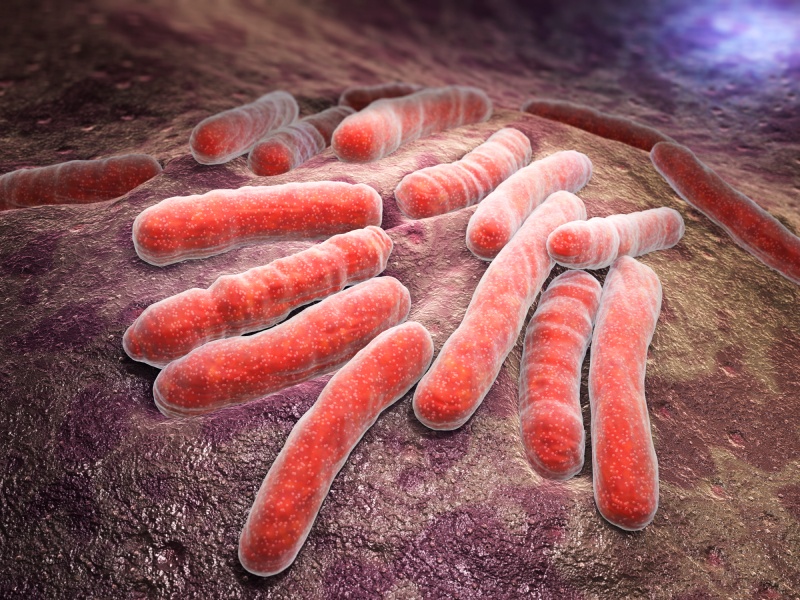Immunomagentic separation is a selective and faster assay than microbiological culture for detection of bacteria in food, water, or clinical samples, but it still has limitations. A novel bacteriophage-based magnetic separation has been developed to take the magnetic separation assay to the next level.
Bacteriophage-based magnetic separation is novel and effective
The researchers genetically modified an E. coli specific bacteriophage to express biotin tags. These phages were then incubated with magnetic beads coated with streptavidin. The phage-bead complexes were then used to selectively separate E. coli bacteria out of a solution. Magnetic separation of the phage bead complexes was able to capture 86.2% of the E.coli bacteria out of the solution within 20 minutes. Efficacy was confirmed by PCR of captured E.coli DNA. The entire procedure, including PCR can be completed within 3 hours.

Benefits of magnetic separation
Traditional culture methods require 4 to 6 days whereas magnetic separation requires hours. Additionally, the culture system relies on sterile growth and differentiation mediums. Results can be inconclusive if multiple types of bacteria are present in a single culture, and unwanted bacteria can out-compete and mask the detection of the target. These problems can be avoided by using magnetic separation. Immunomagnetic separation employs antibody-coated magnetic beads to specifically bind to target bacteria. This is an effective method and produces satisfactory results, but antibodies can be expensive and are susceptible to false positive results from cross-reactions with non-target compounds.
Additionally, the antibodies are covalently attached to the beads, and these bonds can be disrupted by changes in pH or salt concentration. Recently, to solve these problems, researchers developed a new technique using bacteriophages in place of antibodies on the surface of magnetic beads. The bacteriophages are attached to the beads by the incredibly strong affinity between biotin and streptavidin, which is unaffected by changes in pH or salt concentration.
Bacteriophages and biotin-streptavadin affinity binding
- Bacteriophages are viruses with specificity to certain types of bacteria. They are an elegant alternative to antibodies for surface functionalization of magnetic beads. The use of bacteriophages instead of antibodies reduces the chance of false-postive results, and circumvents the need for covalent binding to the bead surface.
- Biotin and streptavidin have a very strong affinity for each other and the system is an ideal alternative to covalent functionalization. In the biotin-streptavadin system the magnetic beads are first coated with streptavidin and then functionalized by biotin-tagged molecules. This system could be applied to antibodies, but biotin-tagged antibodies often lose functionality. The advantage of using bacteriophages is that they can be genetically modified to express the biotin tag without losing their specificity to the target antibody.
Magnetic separation is the way of the future. New developments like this one will introduce the assay to applications where it had previously been technically prohibitive.
Related news
- Magnetic separation Rack
- Magnetic Beads for Immunoprecipitationof Protein Complexes
- A novel use for magnetic separation: combining magnetic particles with photo-responsive molecularly imprinted polymers





